Geographical Location and Climate
Chefchaouen, a charming city nestled in the Rif Mountains of northern Morocco, is renowned for its unique geographical location and favorable climate. Surrounded by rugged terrain and lush greenery, the city benefits from its elevated position, offering stunning views and a cool, temperate climate. This combination of natural beauty and agreeable weather makes Chefchaouen a popular destination for travelers seeking both scenic landscapes and comfortable outdoor experiences.
Position within the Moroccan Rif Mountains
Chefchaouen is a picturesque city located in the northern part of Morocco, nestled within the Rif Mountains. Its strategic position offers stunning views of the surrounding rugged terrain and lush valleys, making it a distinctive feature of its landscape. The city lies approximately 65 kilometers southeast of Tangier, serving as a gateway between the coastal plains and the mountainous interior.
The climate of Chefchaouen is characterized by a Mediterranean influence with semi-arid tendencies. Summers tend to be warm and dry, with temperatures often rising above 30°C (86°F), while winters are cooler and wetter, with temperatures dropping to around 10°C (50°F). The city experiences moderate rainfall mainly during the winter months, contributing to its verdant scenery and diverse flora. This pleasant climate makes Chefchaouen an attractive destination year-round and influences its vibrant local culture and lifestyle.
Climate and Weather Patterns
Chefchaouen, a picturesque city in northern Morocco, is nestled within the Rif Mountains, giving it a unique geographical setting that influences its climate and weather patterns. Its elevated position, approximately 600 meters above sea level, offers stunning views of the surrounding rugged terrain and lush valleys.
The city experiences a Mediterranean climate characterized by mild, wet winters and hot, dry summers. During the winter months, temperatures typically range from 5°C to 15°C, with occasional rainfall contributing to the region’s greenery. Summers can see daytime temperatures climbing up to 30°C or higher, but the cooler mountain air often provides relief from the heat.
Weather patterns in Chefchaouen are influenced by the proximity to the Atlantic Ocean and the Rif Mountains, leading to relatively moderate and stable climatic conditions. Rainfall is most prominent from November to March, supporting the region’s lush vegetation, while the dry season extends from June to September. These climatic features make Chefchaouen a pleasant destination year-round, attracting visitors seeking both scenic beauty and temperate weather.
Historical Background
Chefchaouen, often called the Blue City, is a captivating town nestled in the Rif Mountains of Morocco. Its rich historical background dates back to its founding in 1471 as a Moorish fortress aimed at repelling Portuguese invasions. Over centuries, it became a haven for exiles and a melting pot of diverse cultures, contributing to its unique architectural and cultural identity. The city’s history is deeply intertwined with its role as a spiritual and commercial center, shaping its vibrant traditions and picturesque scenery today.
Origins of Chefchaouen
Chefchaouen, a picturesque city nestled in the Rif Mountains of Morocco, has a rich historical background that dates back centuries. Originally founded in 1471 as a small fortress, it served as a defensive outpost for the Moorish and Jewish populations fleeing the Reconquista in Andalusia. Its strategic location allowed it to become a vital center for trade, culture, and resistance during various periods of history. The city’s name, derived from the Berber words “Chef” meaning “horn” and “Chaouen” meaning “peaks,” reflects its mountainous surroundings. Over the centuries, Chefchaouen grew into a vibrant multicultural community influenced by Berber, Arab, and Jewish cultures, which is still evident today in its architecture and traditions. The city’s historical significance as a fortified town and its unique blue-washed streets make it a treasured site in Moroccan history.
Historical Influences and Cultural Heritage
Chefchaouen, a picturesque city in northern Morocco, boasts a rich historical background that dates back to the 15th century. Founded in 1471 by Moulay Ali Ben Moussa Ben Rached El Alami, it served as a fortress to defend against Portuguese invasions and later became a refuge for Moriscos fleeing Spain. Over the centuries, its strategic location and diverse population have contributed to a vibrant cultural tapestry. The city’s architecture reflects a blend of Andalusian, Moroccan, and Berber influences, showcasing its historical significance as a crossroads of civilizations.
Throughout history, Chefchaouen has been influenced by various cultures, including Arab, Andalusian, and European, which have shaped its art, music, and customs. The city’s development was also impacted by trade routes connecting it to other parts of Morocco and beyond, fostering economic and cultural exchanges. The presence of several historic kasbahs, mosques, and medinas highlights its role as a cultural and religious hub within the region.
The cultural heritage of Chefchaouen is vividly expressed through its distinctive blue-painted streets, traditional crafts, and local cuisine. The blue color, now iconic, is believed to symbolize the sky and heaven, and has been part of the city’s identity for generations. Its festivals, music, and artisanal markets serve as living testimonies to a rich cultural legacy that continues to thrive and attract visitors from around the world, preserving the unique character of this Moroccan gem.
Significant Events in the City’s History
Chefchaouen, also known as the “Blue City,” is a historic town nestled in the Rif Mountains of northeastern Morocco. Its origins date back to the 15th century when it was founded by Moorish refugees fleeing the Reconquista in Spain, serving as a fortress to defend against invasions and influence from invading armies.
Throughout its history, Chefchaouen has been a vital center for trade, especially in livestock and crafts such as weaving and pottery. In the 20th century, it gained prominence for its unique blue-painted streets, which were originally introduced by Jewish refugees to symbolize heaven and act as a repellent to mosquitoes. This distinctive feature has become a defining characteristic of the city, attracting tourists worldwide.
Significant events include its role during the Spanish occupation in the early 20th century, which left a lasting impact on its architecture and urban development. The city also became a hub for anti-colonial resistance during Morocco’s struggle for independence in the mid-20th century, fueling its cultural and political identity. Today, Chefchaouen is recognized for its rich history, vibrant culture, and stunning visual appeal, making it a treasured gem in Morocco’s historical landscape.
Architectural and Urban Features
Chefchaouen, a stunning city nestled in the Rif Mountains of Morocco, is renowned for its unique architectural and urban features that blend Andalusian, Moroccan, and Berber influences. The city’s charming, narrow winding streets are lined with vibrant blue-washed buildings, creating a picturesque and serene atmosphere. Its urban layout reflects a harmonious integration of traditional design elements with local cultural heritage, making it a captivating destination for architecture enthusiasts and travelers alike.
Characteristic Blue-Washed Streets
Chefchaouen, a charming city in Morocco, is renowned for its distinctive blue-washed streets that create a mesmerizing and tranquil atmosphere. The city’s architecture reflects traditional Moroccan styles, characterized by whitewashed walls, arched doorways, and ornate wrought-iron balconies. Narrow winding alleys connect bustling markets and peaceful courtyards, enhancing the city’s intimate and historic charm. The blue streets serve both aesthetic and practical purposes, helping to keep buildings cool and repel insects. This unique color palette, combined with vibrant market stalls, tiled mosaics, and handcrafted details, gives Chefchaouen its signature character as a picturesque and culturally rich destination, embodying a harmonious blend of natural beauty and architectural heritage.
Medina Layout and Key Landmarks
Chefchaouen, known as the “Blue City” of Morocco, showcases a unique architectural and urban layout that reflects its rich history and cultural heritage. The city is characterized by narrow winding streets, vibrant blue-painted buildings, and a medina that maintains traditional Moroccan design elements. The layout is compact and labyrinthine, designed to provide shade and coolness in the hot climate, creating a charming and immersive atmosphere for visitors and locals alike.
The medina of Chefchaouen features a maze of alleys, small squares, and bustling marketplaces that serve as the heart of social life. Its streets are often lined with artisan shops, cafes, and local souks, emphasizing a community-oriented urban design. The city’s architecture incorporates Andalusian, Moorish, and Amazigh influences, evident in the decorative tiles, arched doorways, and stucco walls.
Key landmarks include the Kasbah Museum, a historic fortress situated in the main square offering insight into the city’s history and architecture. The Grand Mosque, with its minaret visible from various parts of the city, is another significant religious site. The Ras El Maa waterfall, located just outside the medina, provides a natural scenic spot and an example of traditional water management infrastructure. Overall, Chefchaouen’s architectural and urban features create a picturesque, culturally rich environment that attracts many visitors worldwide.
Traditional Moroccan Architecture Elements
Chefchaouen, known as the “Blue City” of Morocco, showcases a distinctive blend of architectural and urban features rooted in traditional Moroccan design. Its narrow winding streets and vibrant blue-painted walls create a picturesque maze that reflects the city’s rich history and cultural heritage. The architecture prominently features kasbahs, medina walls, and riads, which are traditional Moroccan houses built around a central courtyard. These structures often incorporate intricate stucco work, colorful tile mosaics, and carved wooden elements that highlight craftsmanship and artistic detail. Arched doorways and windows, along with decorative minarets, are common elements that add to the aesthetic appeal. The use of local materials such as adobe, stone, and clay contributes to the buildings’ thermal comfort and harmonious integration with the surrounding landscape. Overall, the architecture of Chefchaouen embodies timeless Moroccan traditions while maintaining a unique charm that is instantly recognizable.
Tourist Attractions and Landmarks
Chefchaouen, often called the Blue City of Morocco, is renowned for its stunning blue-painted streets and vibrant culture. Visitors are drawn to its enchanting scenery, historic landmarks, and warm hospitality. Exploring this city’s unique attractions offers a memorable experience filled with breathtaking views and rich traditions that reflect its fascinating history and artistic spirit.
Kasbah Museum and Souks
Chefchaouen, often called the “Blue City” of Morocco, offers a vibrant array of tourist attractions and landmarks that captivate visitors. Among these, the Kasbah Museum stands out as a stunning historical site nestled in the heart of the city, showcasing Moroccan architecture and cultural artifacts. The museum provides insight into the region’s history, traditions, and crafts, making it a must-visit for history enthusiasts.
Adjacent to the Kasbah Museum, the bustling souks (markets) of Chefchaouen are a vibrant labyrinth of narrow alleyways filled with stalls selling local handicrafts, textiles, spices, and jewelry. Exploring these souks offers a unique glimpse into the daily life of locals, as well as the opportunity to purchase authentic Moroccan souvenirs. The lively atmosphere, combined with the city’s iconic blue-painted walls, makes shopping in Chefchaouen a memorable experience for all visitors.
Outlying Natural Sites and Scenic Views
Chefchaouen, often called the “Blue City” of Morocco, is renowned for its stunning architecture and vibrant landscapes. Visitors are captivated by its winding streets painted in shades of blue and white, creating a mesmerizing atmosphere. The city’s historic medina is a maze of charming alleys lined with markets, cafes, and handicraft shops, offering a rich cultural experience. The nearby Kasbah Museum provides insight into the region’s history and offers panoramic views of the town and surrounding mountains.
Beyond the city, Chefchaouen is surrounded by natural beauty that draws outdoor enthusiasts. The outlying natural sites include the lush Talassemtane National Park, home to diverse flora and fauna, scenic hiking trails, and the breathtaking Talassemtane Mountains. These features make it an ideal destination for trekking and nature exploration. The scenic views from the Rif Mountains offer stunning vistas over verdant valleys, terraced fields, and the rugged landscape that defines this unique region of Morocco.
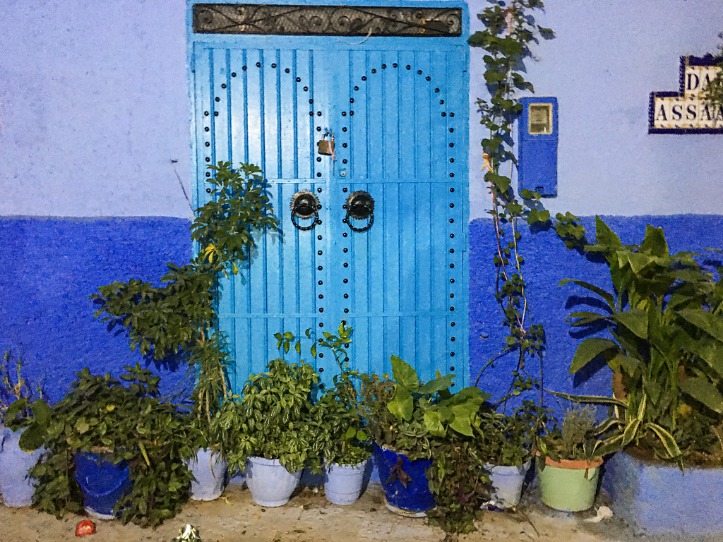
Historical Mosques and Religious Sites
Chefchaouen, known as the Blue City of Morocco, is renowned for its enchanting streets, vibrant culture, and rich history. Visitors are often captivated by its stunning architecture and scenic landscapes, making it a must-visit destination for travelers exploring Morocco.
Among the city’s prominent attractions are the historic landmarks and religious sites that showcase its cultural heritage. The Grand Mosque of Chefchaouen is a significant religious site, featuring beautiful architecture and serving as a spiritual center for the local community. While visiting, travelers can also explore the Kasbah Museum, located in the old fortress, which offers insights into the city’s history and traditional Berber culture.
Another notable site is the Uta el-Hammam Square, the vibrant heart of the city where locals gather and where traditional markets and cafes abound. The surrounding narrow alleyways are lined with charming blue-painted streets, leading visitors to hidden gems and viewpoints overlooking the Rif Mountains. For those interested in spiritual history, nearby mosques and old tribal shrines provide a glimpse into the region’s religious heritage.
Overall, Chefchaouen’s blend of historical mosques, religious sites, and iconic landmarks make it a fascinating destination that beautifully combines culture, history, and natural beauty. Exploring these sites offers a deeper understanding of the city’s past and its vibrant present.
Cultural Traditions and Festivals
Chefchaouen, a stunning city in Morocco, is renowned for its rich cultural traditions and vibrant festivals. The city’s unique blend of Arab, Berber, and Spanish influences creates a colorful tapestry of customs that are celebrated with enthusiasm throughout the year. From lively music and dance to traditional craftsmanship, Chefchaouen’s festivals offer a captivating glimpse into its diverse cultural heritage.
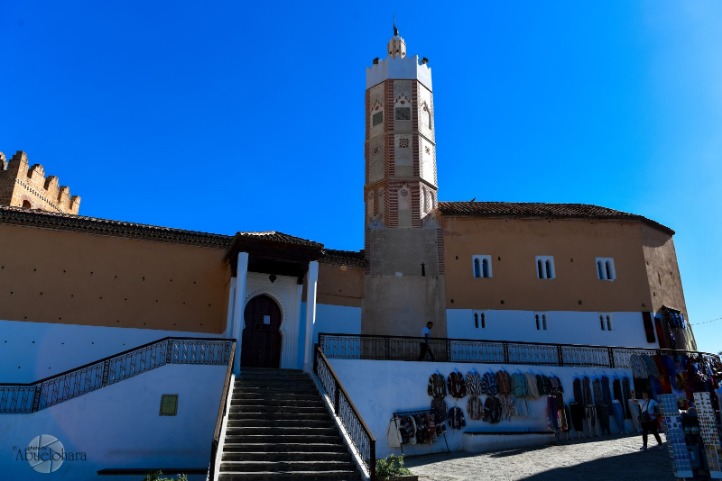
Music, Dance, and Local Arts
Chefchaouen, a picturesque city nestled in the Rif Mountains of Morocco, is renowned for its rich cultural traditions and vibrant festivals that reflect its diverse heritage. The city hosts various celebrations throughout the year, where locals and visitors alike come together to honor their history and customs. Music plays a vital role in these festivities, with traditional genres such as Andalusian, Chaabi, and Gnawa music filling the air with energetic rhythms and soulful melodies. Dance is equally important, with performances often featuring lively group dances and drummers that evoke a sense of community and celebration. The local arts scene is equally captivating, showcasing intricate tile work, pottery, and textiles that highlight the artisans’ craftsmanship. These artistic expressions are deeply rooted in Chefchaouen’s identity, making the city a vibrant tapestry of cultural richness that invites exploration and appreciation.
Annual Festivals and Celebrations
Chefchaouen, a picturesque city in Morocco, is renowned for its vibrant cultural traditions and lively festivals that showcase its rich heritage. The city’s unique blend of Berber, Arab, and Spanish influences is reflected in its colorful streets, handicrafts, and celebrations. Visitors often immerse themselves in its local customs, experiencing authentic music, dance, and culinary delights during various events throughout the year.
One of the most celebrated annual festivals in Chefchaouen is the Mousssem Festival, which honors local traditions, music, and dance. This event attracts visitors from around the world who gather to enjoy traditional Gnawa music, folklore performances, and communal meals. The festival fosters a strong sense of community and cultural pride among residents and visitors alike.
Another significant celebration is the Aid al-Fitr and Aid al-Adha festivals, which are marked by special prayers, feasts, and family gatherings. During these times, the city comes alive with festive markets, traditional attire, and shared meals that highlight the deep religious and cultural roots of the region. These festivals provide a glimpse into the spiritual life of Chefchaouen’s inhabitants.
Cultural traditions in Chefchaouen also include the art of hand-weaving, pottery, and the making of traditional Moroccan carpets. These crafts are often showcased during local festivals and markets, allowing artisans to display their skills and keep age-old techniques alive. The city’s festivals serve as a platform to celebrate and preserve these cultural treasures, ensuring they are passed down through generations.
Cuisine and Local Culinary Specialties
Chefchaouen, often called the Blue Pearl of Morocco, is renowned for its vibrant cultural traditions and lively festivals that celebrate its rich heritage. The city hosts annual events such as the Moussem of Moulay Abdessalam, a colorful celebration honoring the local saint, featuring music, dance, and traditional rituals that bring the community together. These festivities showcase the deep-rooted spiritual and social customs of the region, offering visitors a glimpse into its authentic Moroccan culture.
Cuisine in Chefchaouen is characterized by a blend of Berber, Arab, and Andalusian influences, creating a diverse culinary landscape. Traditional dishes like tagine, couscous, and pastilla are staples, often prepared with locally sourced ingredients. The city’s markets are filled with aromatic spices, fresh vegetables, and succulent meats, reflecting the region’s rich agricultural history and culinary craftsmanship.
Local culinary specialties in Chefchaouen include the famous kebabs seasoned with regional spices, the hearty harira soup, and traditional bread such as khobz. The city’s small cafes and restaurants serve these authentic dishes alongside sweet treats like msemen and Baghrir, offering visitors an authentic taste of Moroccan hospitality. The vibrant flavors and simple ingredients make Chefchaouen a delightful destination for food enthusiasts eager to explore the tastes of Morocco’s mountain region.
Local Handicrafts and Souvenirs
Chefchaouen, the charming blue-washed city in Morocco, is renowned not only for its scenic beauty but also for its vibrant local handicrafts and souvenirs. Visitors can explore a rich array of handcrafted items that reflect the city’s unique cultural heritage and artistic traditions. These authentic products offer a perfect way to bring home a piece of Chefchaouen’s magical ambiance and craftsmanship.
Textile and Carpet Production
Chefchaouen, a picturesque city in Morocco, is renowned for its vibrant local handicrafts and souvenirs that reflect its rich cultural heritage. Visitors can find a variety of handmade products such as woven textiles, leather goods, and intricate ceramics that showcase traditional Moroccan artistry. The city’s markets are filled with unique items that serve as perfect keepsakes of their Moroccan experience.
Textile and carpet production in Chefchaouen hold deep historical significance, with local artisans specializing in creating beautiful woven fabrics and carpets using age-old techniques. These textiles often feature geometric patterns and vivid colors, representing the local cultural identity. The craft of carpet making is passed down through generations, fostering a vibrant local economy and preserving traditional skills.
Pottery and Ceramics
Chefchaouen, known as the Blue City of Morocco, is renowned for its vibrant local handicrafts and unique souvenirs that reflect its rich cultural heritage. Visitors can find beautifully handcrafted items such as woven textiles, embroidered clothing, and intricate jewelry made by skilled artisans from the region. The city’s markets are filled with colorful displays of traditional crafts that showcase the artistry passed down through generations.
Pottery and ceramics in Chefchaouen are particularly notable, featuring distinctive patterns and techniques that highlight the city’s artistic traditions. Local potters create functional and decorative items such as bowls, plates, lamps, and tiles often adorned with geometric and floral motifs. These pieces are made using traditional methods and fired in clay ovens, resulting in durable and beautiful objects that serve as perfect souvenirs to remember the city.
Exploring the markets and workshops in Chefchaouen offers a unique opportunity to observe artisans at work and purchase authentic handcrafted products. These items not only provide a glimpse into the cultural identity of the region but also support local craftsmen and preserve centuries-old crafts in Morocco.
Artisan Markets and Shopping Tips
Chefchaouen, known as the Blue City of Morocco, offers a vibrant array of local handicrafts and souvenirs that reflect its rich cultural heritage. Visitors can explore artisan markets filled with handwoven carpets, intricate leather goods, colorful textiles, and unique pottery that showcase traditional Moroccan craftsmanship. These authentic items make perfect keepsakes or gifts, serving as a reminder of the city’s charming ambiance.
When shopping at artisan markets in Chefchaouen, it’s helpful to learn a bit of basic Arabic or French to communicate more effectively with vendors. Bargaining is common and part of the shopping experience, so don’t hesitate to negotiate respectful prices. Take your time wandering through the narrow streets and stalls, and be sure to inspect items for quality before purchasing. Visiting established markets like Souk or local cooperatives ensures authentic products and fair prices.
To make the most of your shopping experience, bring cash in Moroccan Dirhams, as many small vendors prefer cash transactions. Wear comfortable shoes since exploring the markets involves walking along cobbled streets. Lastly, embrace the local culture by supporting artisans directly—this not only guarantees authenticity but also helps preserve traditional crafts for future generations.
Natural Environment and Surroundings
Nestled in the Rif Mountains of Morocco, Chefchaouen is renowned for its stunning natural environment and vibrant surroundings. Surrounded by lush mountains, rolling hills, and picturesque landscapes, the city offers a serene escape into nature. Its proximity to forests, waterfalls, and scenic viewpoints makes it a perfect destination for those seeking tranquility and outdoor adventures amidst breathtaking scenery.
Mountain Ranges and Hiking Trails
Chefchaouen, a picturesque city in Morocco, is renowned for its stunning natural environment and breathtaking surroundings. Nestled amidst the Rif Mountains, the city offers a serene escape into a lush landscape filled with vibrant greenery and scenic vistas. The mountain ranges surrounding Chefchaouen provide a perfect backdrop for outdoor enthusiasts seeking adventure and tranquility alike.
The Rif Mountains are characterized by rugged peaks and dense forests, creating ideal conditions for exploring diverse flora and fauna. These mountains not only define the city’s geographical beauty but also serve as a source of outdoor activities such as hiking, trekking, and nature walks. The trails through the mountains lead travelers to panoramic viewpoints overlooking the city and beyond, offering unforgettable vistas.
Hiking trails around Chefchaouen are well-maintained and vary in difficulty, appealing to both beginners and experienced hikers. Popular routes include paths leading to the Talassemtane National Park, where hikers can witness dramatic cliffs, waterfalls, and unique rock formations. Exploring these trails allows visitors to immerse themselves in the tranquil environment and appreciate the untouched natural beauty that surrounds this charming Moroccan city.
Forests and Natural Reserves
Chefchaouen, often called the “Blue City,” is renowned for its breathtaking natural environment and lush surroundings. Nestled in the Rif Mountains of northern Morocco, the city boasts a serene landscape with rolling hills, vibrant flora, and scenic valleys that attract travelers seeking tranquility and natural beauty.
The forests surrounding Chefchaouen are abundant with cedar, oak, and pine trees, providing a habitat for diverse wildlife including Barbary monkeys, various bird species, and other local fauna. These forests are not only essential for ecological balance but also serve as popular spots for hiking and eco-tourism, offering visitors a chance to immerse themselves in pristine natural settings.
- Las Ramblas de Chefchaouen: A beautiful natural reserve with dense greenery, hiking trails, and panoramic views of the city and mountains.
- Talassemtane National Park: A protected area rich in endemic plant species and home to several rare animals, ideal for exploration and nature study.
- Akchour Waterfalls: A stunning natural site with cascading waterfalls, turquoise pools, and lush surroundings, perfect for outdoor activities and relaxation.
Activities for Nature Enthusiasts
Chefchaouen, often called the Blue City of Morocco, offers a stunning natural environment that captivates nature enthusiasts. Surrounded by the Rif Mountains, this enchanting town boasts lush green valleys, rugged cliffs, and scenic hiking trails that invite exploration and adventure. The area’s rich flora and fauna, along with its serene rivers and waterfalls, create a peaceful haven for outdoor lovers seeking tranquility and connection with nature.
For those eager to engage in outdoor activities, Chefchaouen provides a variety of options. Trekking through the mountains allows visitors to enjoy breathtaking vistas and discover hidden spots filled with native plants and wildlife. Exploring the nearby Talassemtane National Park offers opportunities for birdwatching, camping, and learning about local ecosystems. The city’s unique setting also makes it a perfect starting point for mountain biking adventures and village visits, offering a chance to experience traditional Berber culture amidst stunning natural landscapes.
Accessibility and Transportation
Accessibility and transportation play a vital role in exploring the charming city of Chefchaouen, Morocco. Known for its vibrant blue streets and historic medina, ensuring easy and inclusive access allows visitors of all abilities to experience the city’s unique beauty. An efficient transportation system helps residents and tourists alike to navigate the steep alleys and scenic surroundings, making the city more welcoming and easier to explore for everyone.
Getting to Chefchaouen
Getting to Chefchaouen, a picturesque city in Morocco, is an exciting journey that offers several transportation options for travelers. Located in the Rif Mountains, Chefchaouen is accessible from major Moroccan cities such as Tangier, Fez, and Marrakech. Visitors generally arrive via taxi, bus, or car rental, with buses running regularly from nearby cities to Chefchaouen’s bus station. For those preferring more convenience and flexibility, renting a car allows for a scenic drive through Moroccan countryside and mountainous terrains. Once in the city, exploring on foot is the most accessible way to enjoy its narrow, winding streets and vibrant blue buildings. The city is also equipped with local taxis and shared vans that facilitate movement within the area, making it easier for visitors with mobility issues to navigate and discover its charming sights. Overall, accessibility options are available to ensure that travelers can comfortably reach and explore Chefchaouen’s unique and captivating environment.
Local Transportation Options
Chefchaouen, known for its stunning blue streets and rich cultural heritage, offers various transportation options that make exploring the city easy and accessible for all visitors. The city’s compact size allows for convenient movement on foot, which is ideal for sightseeing and enjoying the vibrant local atmosphere. For longer distances within the city or neighboring areas, taxis are readily available and affordable. These taxis operate on a shared basis or can be hired privately for more comfort and convenience. Additionally, bus services connect Chefchaouen to nearby towns and cities, providing a budget-friendly way to explore the region. Despite its small size, the city is committed to enhancing accessibility, with efforts underway to improve pathways and facilities for visitors with mobility challenges. Overall, Chefchaouen’s transportation infrastructure ensures that travelers can easily access the city’s attractions and navigate its charming streets with comfort and ease.
Travel Tips for Visitors
Visiting Chefchaouen offers a unique experience, and ensuring accessibility and smooth transportation can enhance your trip. The city’s charming narrow streets and hilly terrain may pose challenges for visitors with mobility issues, so planning ahead is essential. Many accommodations and tour operators are becoming more aware of accessibility needs, offering options suited for all travelers. It’s helpful to confirm access arrangements before booking to ensure a comfortable stay.
Transportation within Chefchaouen is primarily by foot, as vehicles are restricted in many parts of the medina. For longer distances, taxis or guided tours can provide convenient options. Visitors arriving from Tangier or Fez can use buses or private transfers; these are generally reliable and affordable. When exploring, consider hiring a local guide who can help navigate the streets and provide cultural insights, making your visit more enjoyable and accessible.
Travel tips for visitors include wearing comfortable shoes suitable for uneven cobblestone streets and carrying sufficient water, especially during hot weather. It’s also wise to understand local customs and keep a map or GPS handy, as signage may be limited in some areas. By staying prepared and aware of transportation options, visitors can fully enjoy the vibrant beauty of Chefchaouen while ensuring a comfortable and accessible journey.

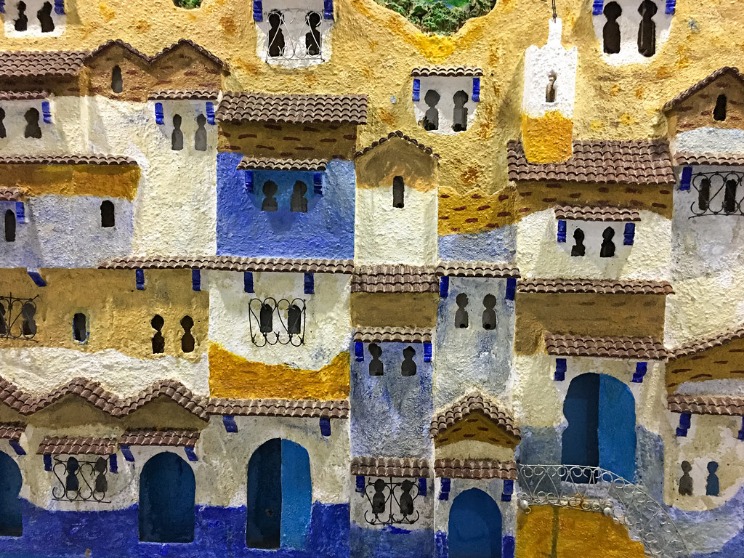
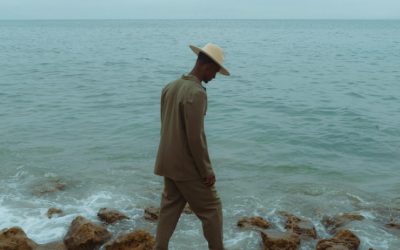
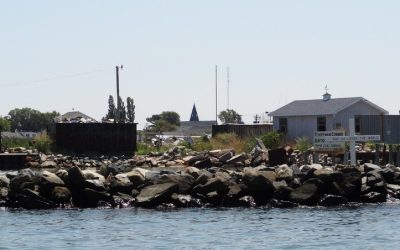
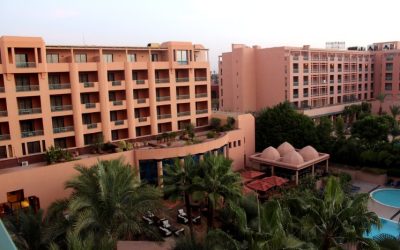
0 Comments